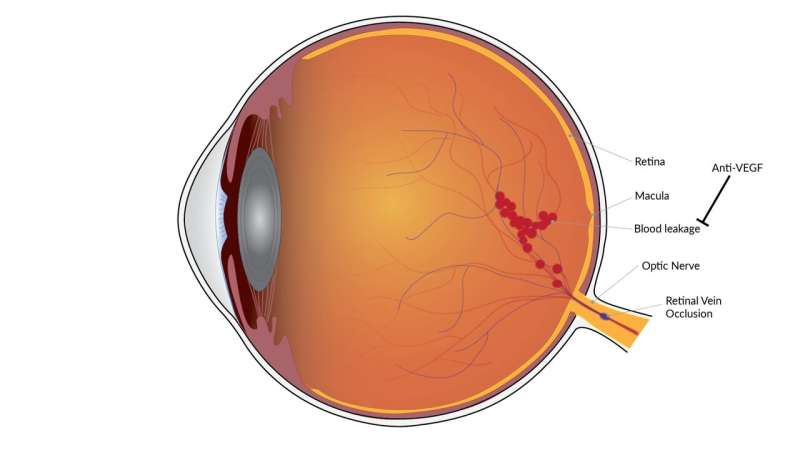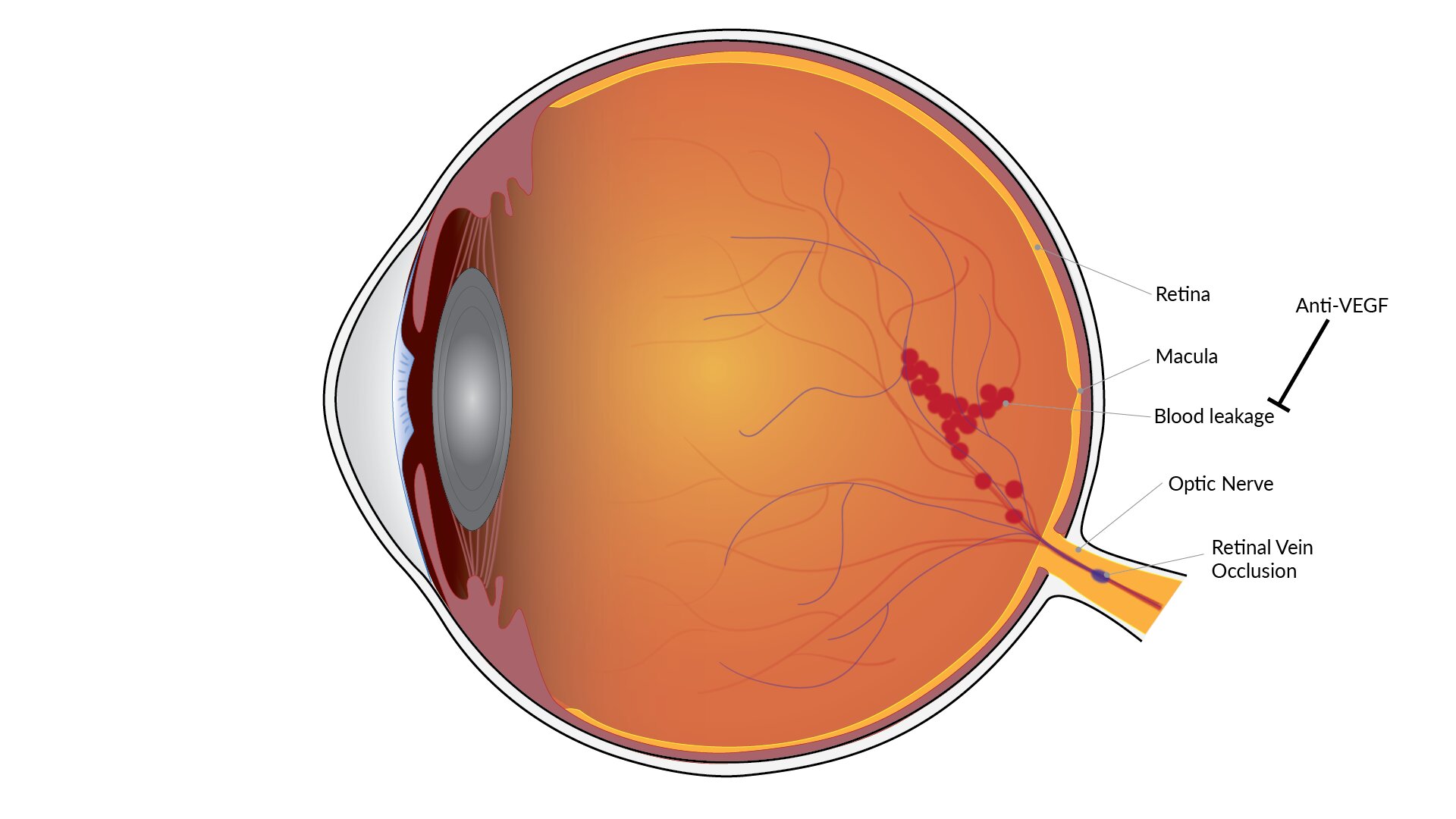
New research shows that a treatment for retinal vein occlusion yields long-lasting vision gains, with visual acuity remaining significantly above baseline at five years. However, many patients require ongoing treatment. Retinal vein occlusion is one of the most common blinding conditions in the United States; without treatment, central retinal vein occlusion (CRVO), the most severe type of retinal vein occlusion often leads to significant and permanent vision loss. A report on five-year outcomes of the Study of Comparative Treatments for Retinal Vein Occlusion 2 (SCORE2), was published April 21 in American Journal of Ophthalmology. SCORE2 was funded in part by the National Eye Institute (NEI), a part of the National Institutes of Health.
Retinal vein occlusion is caused by a blockage of the veins carrying blood away from the retina, the light-sensitive tissue at the back of the eye. This blockage can lead to macular edema where fluid becomes trapped within and under the retina, leading to rapid and severe loss of visual acuity. Without treatment, this condition typically leads to permanent loss of vision. The most effective treatment, injections of anti-vascular endothelial growth factor (VEGF) drugs, helps control blood vessel leakage and swelling in the retina.
“While anti-VEGF therapy is associated with significant improvement in both retinal swelling and visual acuity in patients with central or hemi-retinal vein occlusion, our findings show that most of the patients followed still required treatment to control the macular edema for at least five years,” said Ingrid U. Scott, M.D., M.P.H., Penn State College of Medicine, Hershey, chair of the study. “This demonstrates the importance of continued monitoring of these patients.”
In 2017, SCORE2 clinical trial investigators reported that two types of anti-VEGF treatment were equally effective at improving visual acuity in people with macular edema due to CRVO or hemi-retinal vein occlusion (HRVO). CRVO affects the entire retina, while HRVO generally affects about half of the retina. Half of the study participants had been given Avastin (bevacizumab) while the other half received Eylea (aflibercept). Both drugs were administered by injection once per month for six months. At the six-month mark, the vision of participants in both groups had, on average, improved over three lines on an eye chart.
As detailed in this new report, the study investigators followed SCORE2 participants for five years, collecting information about their visual acuity, treatments, and whether their macular edema had resolved. After the initial 12-month study period, participants were treated at their physician’s discretion. Most physicians reduced the frequency of anti-VEGF injections and some switched their patients to the other anti-VEGF drug. At five years, many participants had lost some visual acuity when compared to their acuity at the 12-month mark; however, they retained on average three lines of improvement, compared to their acuity at the beginning of the study.
“It was surprising to us that despite many participants still needing treatment after five years, their visual acuity outcome remained very good,” said Michael Ip, M.D., co-chair of the study from Doheny Eye Institute, University of California Los Angeles. “In comparison to this treatment for wet age-related macular degeneration, where initial vision improvements fade over time, these results are quite favorable.”
“This five-year study tells us a lot about what’s happening with retinal vein occlusion patients in the real world,” said Scott. “Prior to this study, retinal vein occlusion was widely considered an acute illness. This study shows that RVO is a chronic disease. It also underscores the importance of disease monitoring and individualized treatment to achieve the best possible vision.”
Source: Read Full Article
